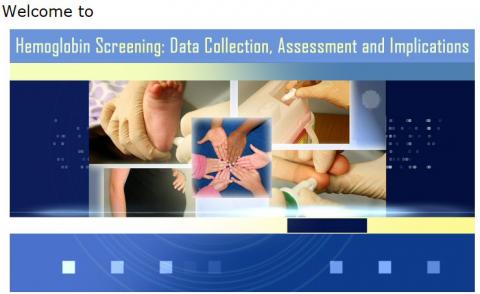There are four sections in this course:
- Section 1: State Policy – Collection Schedule
- Section 2: Collection Technique/Universal Precautions
- Section 3: Hemoglobin Reference Ranges and Related Health Conditions
- Section 4: Critical Thinking Application of Hematological Data Collection and Assessment
There are review questions at the end of each section. These review questions will provide you with an opportunity to apply the knowledge and skills presented in these sections. There is a post-test at the end of the course.
A Certificate of Completion is awarded on successful completion of this course.
Intended Audience
WIC personnel and other health care providers participating in hematological data collection and assessment
Learning Objectives:
Section 1: State Policy – Collection Schedule
Upon completion of this part, you will be able to:
- Identify differences in screening schedule for women, infants, and children
- Describe situations when it is appropriate to skip the blood test
Section 2: Collection Technique/Universal Precautions
Upon completion of this part, you will be able to:
- Identify appropriate puncture sites for blood collection in all populations
- Describe collection procedure including appropriate use of personal protective equipment
Section 3: Hemoglobin Reference Ranges and Related Health Conditions
Upon completion of this part, you will be able to:
- Identify low and high hemoglobin (hb) and hematocrit (hct)values in women, infants, and children
- Identify appropriate referral criteria for abnormal blood values
- Describe nutritional factors that affect hemoglobin (hb) levelsM/li>
- Describe behavioral/lifestyle factors that affect hemoglobin (hb) levels
Section 4: Critical Thinking Application of Hematological Data Collection and Assessment
Upon completion of this part, you will be able to:
- Provide examples of additional assessment questions
- Describe situations where lifestyle and nutritional factors can affect hemoglobin (hb) levels
Pre-requisites/Learning Level
No pre-requisites
Competencies addressed
Core Competencies for Public Health Professionals identified
Domain 1: Analytical/Assessment Skills
- 1A5. Selects valid and reliable data
- 1A6. Selects comparable data (e.g., data being age-adjusted to the same year, data variables across datasets having similar definitions)
- 1A9. Describes public health applications of quantitative and qualitative data
Domain 2: Policy Development/Program Planning Skills
- 2A7. Describes implications of policies, programs, and services
Contact Hours/CEUs Offered
This course is no longer provides continuing education by the Iowa Board of Nursing and the Commission on Dietetic Registration
Cost
Free
Modality/format
Online Self-Pace
Length
2 hours
Presenter(s) and/or Content Experts
Maria Scott MPH, Nor Hashida Abd-Hamid M.Ed Ph.D, Brenda Dobson MS RD LD, Dawn Gentsch MPH CHES, Judy Goddard RN BS CIC, Janice O’Donnell RN RD, Maria Scott MPH
Technical requirements:
- Adobe Acrobat Reader
- Speakers
Registration requirements
Register a free account
Creation and/or update
September 9, 2019




